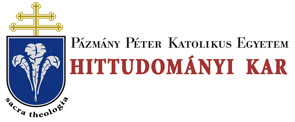Folia Theologica et Canonica 6. 28/20 (2017)
IUS CANONICUM - Szabolcs Anzelm Szuromi, O.Praem., Historical development of the aggravating and extenuating circumstances in the canonical penal law
246 SZABOLCS ANZELM SZÚROM!, O.PRAEM. textual versions of St. Ivo of Chartres’ canonical work.26 However - without doubt - the crystalized form of composition of “fontes formales”, together with deliberated interpretation, took place in the Decretimi Gratiani (1 140)27, which had been supplied with many further decretal letters and conciliar decisions, collected firstly in “compliationes”, and after into the Liber Extra (1234), Liber Sextus ( 1298), Clementinae (1317), Extravagantes Iohannis XXII ( 1325/1500), and Extravagantes communes (1500/1503), then supplied it with the decisions of the Council of Trient (1545-1563) and further papal and curial legislation. But we must remember here for the most important canonical auxiliary literature too. particularly the Summa Rolandi which first recension was written around 1150, and the final version of this Summa had been finished around 1164.28 Huguccio’s Summa on the Decretum Gratiani, which was composed for 1 18829; the Orcio ludicialis of Tancredus (t 1234/1236).30 Summa Raimundi (Summa iuris canonici)3', and Bartholomeus de Pisa, Summa de casibus, which widespread work had been composed for the year 1338.32 Finally, we cannot exclude that work which has made a most indispensable influence on the ecclesiastical trials, i.e. Speculum Iudiciale by Gulielmus Durantis in 1271 (revised in 1286 and 1291 )33. This excellent work not only described every process at ecclesiastical tribunals, but also gave a very clear explanation when and how the tribunal could deliberate the aggravating and extenuating circumstances (together with brief definition of them).34 26 Erdő, P., Storia delle Fonti del Diritto Canonico, 98-100. SzuROMi, Sz. A., From a reading book to a striicturalized canonical collection - The Textual Development of the Ivonian Work- (Aus Recht und Religion 14), Berlin 2010. 27 Landau, P„ Gratian and the Decretum Gratiani, in Hartmann, W. - Pennington, K. (ed.), The History of Medieval Canon Law in the Classical Period, 1140- 1234 (History of Medieval Canon Law 6), Washington D.C. 2008. 22-54. Viejo-Ximénez, J. M., Decreto de Gradano, in Otaduy, J. - Viana, A. - Sedano, J. (dir.), Diccionario General de Derecho Canònico, II. Pamplona 2012. 954-972. 28 Weigand, R., Magister Rolandus und Papstes Alexander III., in Archiv für katolisches Kirchenrecht 149 (1980) 3^14. Cf. Pennington, K. - Müller, W. P., The Decretalists: The Italian School, in Hartmann, W. - Pennington, K. (ed.), The History of Medieval Canon Law in the Classical Period, 1140-1234: from Gratian to the Decretals of Pope Gregory IX (The History of Medieval Canon Law 6), Washington D.C. 2008. 121-173, especially 131-134. 29 Erdő, P., Geschichte der Wissenschaft vom kanonistischen Recht, 63. 30 Edition: Bergmann, F. (ed.), Pillii, Tancredi, Gratiae libri de iudiciorum ordine, Göttingen 1842 (repr. Aalen 1965). 31 Edition: Ochoa, X. - Diez, A. (ed.), S. Raimundus de Pennaforte, Summa de iure canonico (Universa Bibliotheca Iuris 1/A), Roma 1975; cf. Erdö, P., Geschichte der Wissenschaft vom kanonistischen Recht, 77, 78. 32 Edition: Lugduni 1519. Henceforth we use for our comparison the text of: Bartholomeus de pysana ordinis fratrorum predicatorum, Summa de casibus, 1475; cf. Erdő, P., Geschichte der Wissenschaft vom kanonistischen Recht, 100, II8. 33 Erdő, P., Storia della scienza del diritto canonico. Una introduzione, Roma 1999. 102, 124. 34 Speculum Iudiciale. Illustratum rt repurgatum a Giovanni Andrea et Baldo degli Ubaldi, Basel 1574 (repr. Aalen 1975)1: II, 1.
